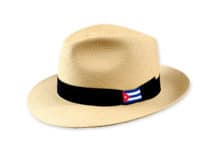The Tinajon and its History
Once it was definitively established, on January 6th of 1528, the Villa de Santa Maria del Puerto del Principe (Vila of Saint Mary of the Prince’s Port), the population was forced to look for a solution before the serious difficulty they faced with the water. This Villa was surrounded of abundant loamy lands with a mud of excellent quality, which constituted the prevalent stuff necessary for the elaboration of the first recipients dedicated to store the valuable liquid. It is said that the origin of the Tinajon is Andalusian and in that region it was used for the conservation of the oils, especially that of olive. This way, the conquerors introduced this model that so much contributed to the social development of Camagüey. The tinajones were located in the patios of the houses and when the spring rains began they started to be filled through curious systems of channels, those which first were made of wood and then they were made of tin or brass. It is necessary to highlight that before the tinajones were filled with the spring rains; it was expected to that the first rainstorm cleaned the roofs. Once these they were filled, some families protected the crest with net cloths and covers of the same material that the channel, to avoid that the mosquitoes deposited their breed in the water, that was used preferably to drink and to cook.
Outstanding Data on the Tinajon
The production of the tinajon in Camaguey began at the beginning of the XVII century, once the mud was subjected to a cooking process. Many were the authors that transformed their product into a careful work of craft, which possessed numerous ornamental details and they always had personal information and the date of production. With the pass of the time the valuable piece of mud suffered transformations in the crest, the paunch and its base, in such a way that in many cases, when there are no visible elements that allow to determine its antiquity, its morphological characteristics offer a valuable contribution for its study. It was by the middle of the XIX century that was considered exaggerated the existence of the tinajones in the houses of the city and this brought as a consequence the stop of the production. On December of 1900, the North American authorities that occupied the Island carried out an inventory of the tinajones that existed in the city . This inventory threw the figure of 16 thousand 483. It is necessary to highlight that this wonderful work has ended up becoming, for decades, in the symbol that represents to the city of the Camagüey.








